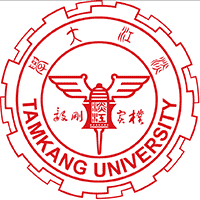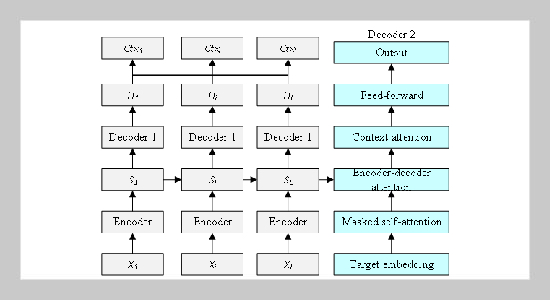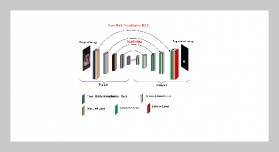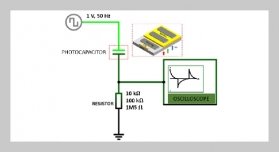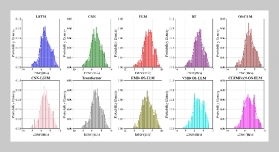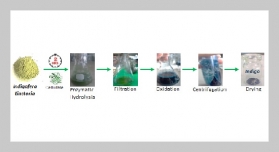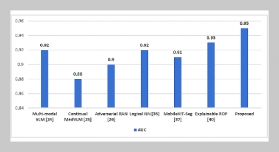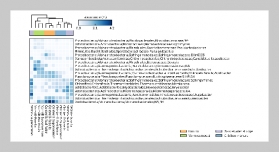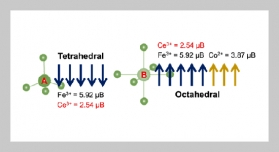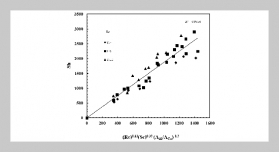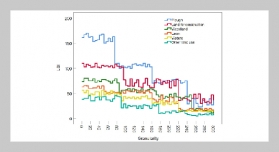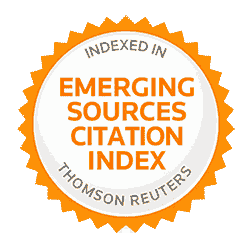- [1] M. Al-Barham, I. Afyouni, K. Almubarak, A. Turky, I. A. T. Hashem, A. B. Nassif, I. Shahin, and A. Elnagar,(2025)“Unlockinglanguageboundaries:AraCLIP transforming Arabic language and image understanding throughcross-lingual models"Engineering ApplicationsofArtificialIntelligence151:110577. DOI:10.1016/j.engappai.2025.110577.
- [2] A. L. Tonja, O. Kolesnikova, A. Gelbukh, and G. Sidorov, (2023)“Low-resource neural machine translation improvement using source-sidemonolingual data" Applied Sciences 13(2): 1201. DOI: 10.3390/app13021201.
- [3] T. Z. Shah, M. Imran, and S. M. Ismail, (2024)“A diachronic study determining syntactic and semantic features of Urdu-English neural machine translation "He liyon10(1): DOI:10.1016/j.heliyon.2023.e22883.
- [4] Y. Sun, S. Yin, H. Li, L. Teng, and S. Karim, (2019) “GPOGC: Gaussian pigeon-oriented graph clustering algorithm for social network scluster"IEEEAccess7:99254 99262.DOI:10.1109/ACCESS.2019.2926816.
- [5] M. A. Faheem, K. T. Wassif, H. Bayomi, and S. M. Abdou,(2024)“Improvingneuralmachinetranslation for low resource languages through non-parallelcorpora:a casestudy of Egyptian dialect to modern standard Arabic translation"ScientificReports14(1):2265.DOI:10. 1038/s41598-023-51090-4.
- [6] D. A. Sulistyo, D. D. Prasetya, F. A. Ahda, and A. P. Wibawa, (2025)“Pivoted Low Resource Multilingual Translation with NER Optimization "ACM Journal of Data and Information Quality: DOI:10.1145/3727876.
- [7] B. Zhang, I. Titov, B. Haddow, and R. Sennrich.“Beyondsentence-levelend-to-end speech translation: Contexthelps”.In: The Joint Conference of the 59th Annual Meeting of the Association for Computational Lin guisticsandthe11thInternationalJointConferenceon Natural Language Processing. Association for Computational Linguistics. 2021,2566–2578. DOI:10.18653/v1/2021.acl-long.200.
- [8] K. Chen, R. Wang, M. Utiyama, E. Sumita, and T. Zhao,(2019)“Neural machine translation with sentence level topic context "IEEE/ACM Transactions on Au dio, Speech, and Language Processing27(12):1970 1984.DOI:10.1109/TASLP.2019.2937190.
- [9] M. Yang, R. Wang, K. Chen, X. Wang, T. Zhao, and M. Zhang,(2020) “A novel sentence-level agreement architecture for neural machine translation "IEEE/ACM Transactions on Audio, Speech, and Language Processing28:2585–2597.DOI:10.1109/TASLP.2020.3021347.
- [10] J. Smith, C. Quirk, and K. Toutanova. “Extracting parallel sentences from comparable corpora using document level alignment”. In: Human language technologies: The 2010 annual conference of the North American chapter of the Association for Computational Linguistics. 2010, 403–411. DOI: 10.3115/1690339.1690350.
- [11] H. Yun, Y. Hwang, and K. Jung. “Improving context aware neural machine translation using self-attentive sentence embedding”. In: Proceedings of the AAAI conference on artificial intelligence. 34. 05. 2020, 9498–9506. DOI: 10.1609/aaai.v34i05.6494.
- [12] J. Yu, L. Zhao, et al., (2021) “A novel deep CNN method based on aesthetic rule for user preferential images recommendation" Journal of Applied Science and Engineering 24(1): 49–55. DOI: 10.6180/jase.202102_24(1).0006.
- [13] S. Zhu, S. Li, and D. Xiong, (2024) “VisTFC: Vision guided target-side future context learning for neural ma chine translation" Expert Systems with Applications 249: 123411. DOI: 10.1016/j.eswa.2024.123411.
- [14] X. Zhu, Q. Ruan, S. Qian, and M. Zhang, (2025) “A hybrid model based on transformer and Mamba for enhanced sequence modeling" Scientific Reports 15(1): 11428. DOI: 10.1038/s41598-025-87574-8.
- [15] M. Bamoki, S. H. Wady, and S. Badawi, (2025) “Holy Quran Kurdish Sorani translation dataset for language modelling" Data in Brief 60: 111533. DOI: 10.1016/j.dib.2025.111533.
- [16] J. Choo, Y.-D. Kwon, J. Kim, J. Jae, A. Hottung, K. Tierney, and Y. Gwon, (2022) “Simulation-guided beam search for neural combinatorial optimization" Advances in Neural Information Processing Systems 35: 8760 8772. DOI: 10.48550/arXiv.2207.06190.
- [17] S. H. Ahammad, R. R. Kalangi, S. Nagendram, S. Inthiyaz, P. P. Priya, O. S. Faragallah, A. Mohammad, M. M. Eid, and A. N. Z. Rashed, (2024) “Improved neural machine translation using Natural Language Pro cessing (NLP)" Multimedia Tools and Applications 83(13): 39335–39348. DOI: 10.1007/s11042-023-17207-7.
- [18] M. E. San, S. Usanavasin, Y. K. Thu, and M. Oku mura,(2024) “A Study for Enhancing Low-resource Thai Myanmar-English Neural Machine Translation" ACM Transactions on Asian and Low-Resource Language Information Processing 23(4): 1–24. DOI: 10.1145/3645111.
- [19] S. C. Siu. “Revolutionising translation with AI: Unravelling neural machine translation and generative pre-trained large language models”. In: New advances in translation technology: Applications and pedagogy. Springer, 2024, 29–54. DOI: 10.1007/978-981-97 2958-6_3.
- [20] S. Bala Das, D. Panda, T. Kumar Mishra, B. Kr. Patra, and A. Ekbal, (2024) “Multilingual neural machine translation for indic to indic languages" ACM Transactions on Asian and Low-Resource Language Infor mation Processing 23(5): 1–32. DOI: 10.1145/3652026.
- [21] G. Lin, A. Milan, C. Shen, and I. Reid. “Refinenet: Multi-path refinement networks for high-resolution semantic segmentation”. In: Proceedings of the IEEE conference on computer vision and pattern recognition. 2017, 1925–1934. DOI: 10.1109/CVPR.2017.549.
- [22] Y. Xia, F. Tian, L. Wu, J. Lin, T. Qin, N. Yu, and T.-Y. Liu, (2017) “Deliberation networks: Sequence generation beyond one-pass decoding" Advances in neural information processing systems 30:
- [23] H. Li, Z. Li, X. Wang, M. Ibrar, and X. Zhu, (2024) “Multi-keyword Ciphertext Sorting Search Based on Con formation Graph Convolution Model and Transformer Network in English Education" International Journal of Network Security 26(4): 555–564. DOI: 10.6633/IJNS.202407_26(4).03.
- [24] J. Tiedemann, M. Aulamo, D. Bakshandaeva, M. Boggia, S.-A. Grönroos, T. Nieminen, A. Raganato, Y. Scherrer, R. Vázquez, and S. Virpioja, (2024) “Democratizing neural machine translation with OPUS-MT" Language Resources and Evaluation 58(2): 713–755. DOI: 10.1007/s10579-023-09704-w.
- [25] Z.-M. Gao, (2011) “Exploring the effects and use of a Chinese–English parallel concordancer" Computer Assisted Language Learning 24(3): 255–275. DOI: 10.1080/09588221.2010.540469.
- [26] A.-M. De Cesare, A. Albom, D. Cimmino, and M. L. Spagnolo, (2020) “Domain adverbials in the news: A corpus-based contrastive study of English, German, French, Italian and Spanish" Languages in Contrast 20(1): 31–57. DOI: 10.1075/lic.17005.dec.
- [27] F. H. Rachman, M. W. M. A. Syauqi, N. Ifada, S. Wahyuni, et al., (2025) “Transformer Hyperparameter Tuning for Madurese-Indonesian Machine Translation" Engineering, Technology & Applied Science Research 15(2): 22216–22225. DOI: 10.48084/etasr.9851.
- [28] Z. Hongying, A. Javed, M. Abdullah, J. Rashid, and M. Faheem, (2025) “Large Language Models With Contrastive Decoding Algorithm for Hallucination Mitigation in Low-Resource Languages" CAAI Transactions on Intelligence Technology: e70004. DOI: 10.1049/cit2.70004.
- [29] B. Li, Y. Weng, F. Xia, and H. Deng, (2024) “Towards better Chinese-centric neural machine translation for low resource languages" Computer Speech & Language 84: 101566. DOI: 10.1016/j.csl.2023.101566.
- [30] X. Meng, X. Wang, S. Yin, and H. Li, (2023) “Few-shot image classification algorithm based on attention mechanism and weight fusion" Journal of Engineering and Applied Science 70(1): 14. DOI: 10.1186/s44147-023-00186-9.
